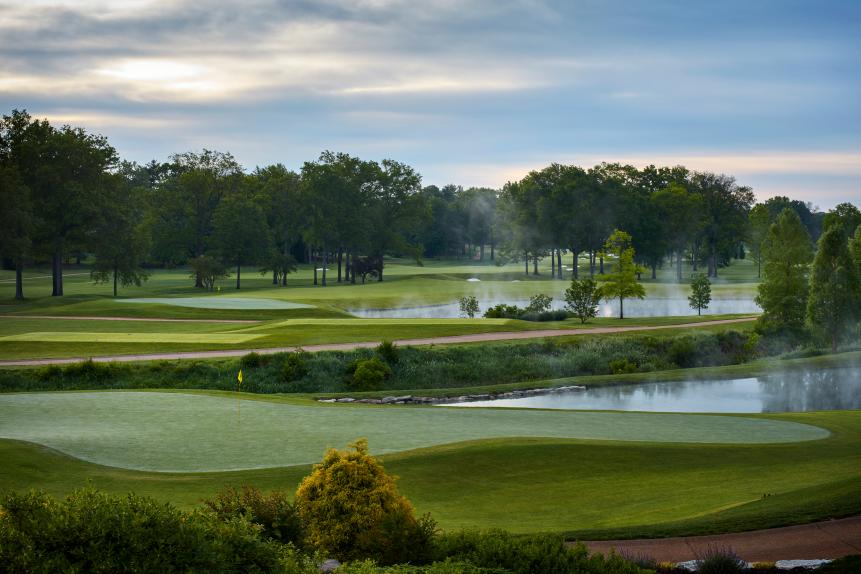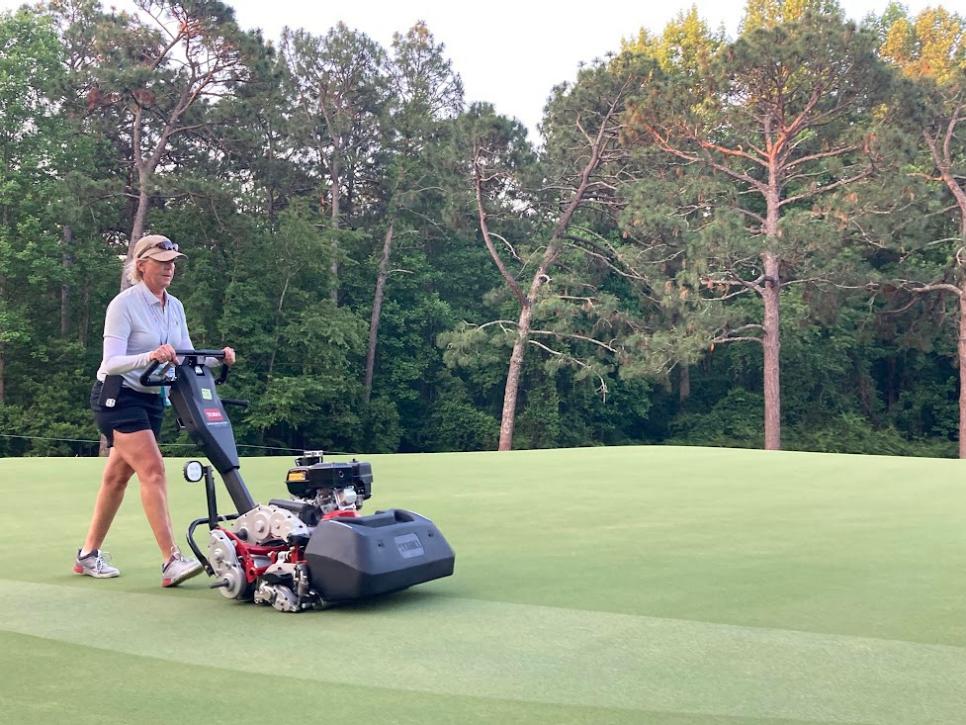A day for thanking golf course superintendents should also be about understanding what they do – Australian Golf Digest

- by Admin
- September 10, 2024

Fall golf is almost here, and for many, the cooler temperatures and peak course conditions make it the best time of the year to play.
It’s fitting, then, that Tuesday Sept. 10 is International “Thank a Golf Course Superintendent Day”, when golfers across the world are encouraged to reach out and show their appreciation for superintendents, their staff and all the work they do to maintain our courses.
The initiative is led by the Golf Course Superintendents Association of America in conjunction with other global superintendent groups, including associations in Great Britain, Australia and Canada. Together, the groups represent more than 31,000 golf course management professionals in 78 countries around the world.
Golfers are encouraged to join in the conversation on social media using the hashtags “#ThankASuper” or “#ThankAGreenkeeper”. Along with significant advertising from the GCSAA to celebrate supers on Sept. 10, golfers are tasked with reflecting on all the work that superintendents and their staff do year-round.
MORE: A superintendent’s daughter was having a mental-health crisis. Then his membership stepped up
It’s this broader view of the role of a superintendent that Carlos Arraya, the general manager and CEO at Bellerive Country Club in St. Louis and 26-year GCSAA member, wants golfers to appreciate. Before becoming CEO at Bellerive, Arraya was the longtime director of agronomy at the club.
 Courtesy of Gary Kellner false Private Bellerive Country Club Saint Louis, MO, United States 4.5 104 Panelists
Courtesy of Gary Kellner false Private Bellerive Country Club Saint Louis, MO, United States 4.5 104 Panelists
- Second 100 Greatest
- Best In State
Once the darling of the USGA, which awarded this Robert Trent Jones design the 1965 U.S. Open, making it the second youngest course to host an Open in the 20th Century (after Northwood in Dallas), Bellerive is now favored by the PGA of America, which successfully concluded the 2018 PGA Championship on it. The polished course that hosted the PGA is a far cry from the immature one of 1965. Hardwoods along holes now have 50 years worth of growth, fairways are now Zoysia and architect Rees Jones has replaced his father’s bunkering with that of his own style, positioned farther off the tees to challenge big hitters. Rees also filled in a pond in front of the 17th green and added chipping areas next to several putting surfaces. View Course
“They’re judged right or wrong on a couple of things,” Arraya says of supers. “Are the greens fast? Are the bunkers good? Is the golf course manicured? I think there’s so many other things that go ahead of that. As we continue to celebrate them, the role of the superintendent, we [should] magnify a little bit deeper—more than what’s on the surface.”
Arraya, who helped prepare Bellerive for the 2018 PGA Championship, says that the best way to show appreciation is to create a personal relationship with our supers. On Thank a Super Day, that might mean going out of your way to catch up with them and thank them for all their work, but Arraya hopes this relationship is maintained during the other 364 days of the year.
“I remember 24 years ago when I started as a super, it was Get the hell out of the way and hide,” Arraya says. “Now we’re in a world where people are more visible. So getting to know them beyond just that they maintain the golf course, I think that’s huge.”
Beyond forming a personal relationship with supers and grounds staff, Arraya encourages golfers to take a more sympathetic view of the role that staff plays in the day-to-day maintenance of courses. While it’s understandable to want to play on the best conditions possible, Arraya stresses that any imperfections on the course are usually not from a lack of effort.
MORE: Aerating greens, explained by a top course superintendent
“Golfers fail to realize that there’s no golf course superintendent that goes to work and says, ‘I’m going to reduce conditions today because I just feel like it,’ ” he says. “There is a reason why conditions aren’t to expectations, whether it’s a weather event that’s coming, whether there’s insect or disease pressure, whether there’s some sort of turf management health issue at play or preparing for something bigger and grander, i.e. aerification.”

With this perspective, the relationship between golfers and superintendents can be more productive. Golfers can politely voice their concerns, supers can explain the various factors influencing conditions and both can leave the interaction feeling understood.
And if your course isn’t in perfect shape at the moment, simply acknowledging that your superintendent is giving his or her best effort can make a lasting impact. Arraya cites one such interaction he had with a member in 2017, when Bellerive was struggling with a few maintenance issues in the lead-up to the 2018 PGA.
One member approached Arraya, thanked him for all his work to get the course back up to standard and said, “It’s not from a lack of trying.”
“They recognized my effort,” Arraya says. “It took the pressure off. They see the effort that I’m trying regardless of what the outcome is here. They know we’re trying everything we can to make this an improved condition.
“That conversation stuck with me forever and to this day, if he called me today, I’d go pick him up wherever he is because that’s how impactful it was.”
ASK A SUPER SERIES:
How courses prep for high-level competition, according to top USGA experts
Why are practice greens slower than greens on the course?
Why’s the grass all brown on our course?
Why are you aerating our greens when they’re in perfect shape?
I repaired my ball mark, but it still doesn’t look right. What did I do wrong?
We all want fast greens, why can’t you just cut them shorter?
Why your superintendent is hoping for lots of snow this winter
Aerating greens, explained by a top course superintendent
This article was originally published on golfdigest.com
The Latest News
-
January 4, 2025Horse Racing News: Holymanz strikes again at Geelong races
-
January 4, 2025Australia coach calls out ‘intimidating’ India celebrations, reveals Konstas chat
-
January 4, 2025Wife’s brutal reaction as Steve Smith savaged over ‘selfish’ act against teammate
-
January 4, 2025Bumrah under cloud as India reveal back spasm | cricket.com.au
-
January 4, 2025Biggest curveball of summer that could decide series; Beau ‘earns his stripes’ in coming of age: Talking Pts




